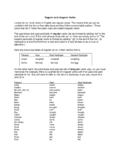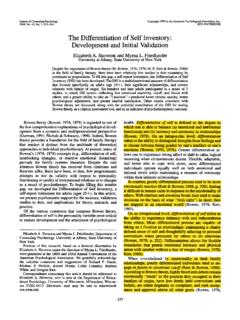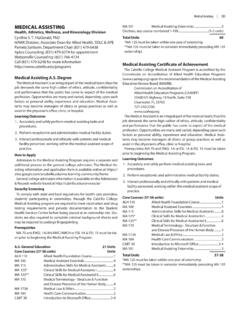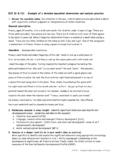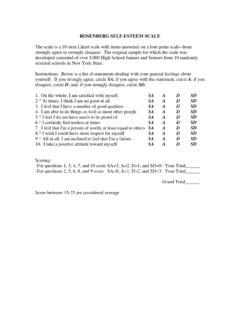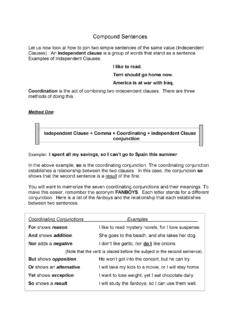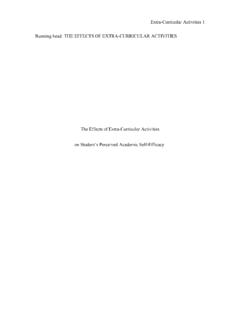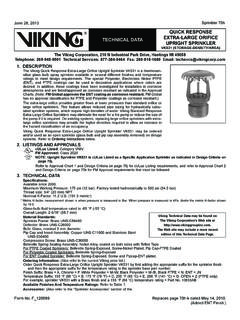Transcription of II. intracellular fluid extra cellular fluid
1 FUNCTIONAL ORGANIZATION OF THE HUMAN BODY The Internal Environment Physiology is the study of function in living matter; it attempts to explain the physical and chemical factors that are responsible for the origin, development, and progression of life. In human physiology we attempt to explain the events (chemical and electrical) that occur in the body which allow us to exist under a wide variety of conditions. I. CELLS AS THE BASIC LIVING UNIT OF THE BODY- The basic living unit of the body is the cell. ORGANS AND TISSUES ARE actually ASSEMBLIES OF MANY DIFFERENT CELLS. They are held together by supporting structures (tissue, bone, etc.)
2 And work to provide a uniform or greater purpose. Each type of cell is specially adapted to perform its specific function. For instance, the red blood cells are specifically designed to carry oxygen from the lungs to the tissues in the body. Even though cells may have difference, in some basic ways they are alike. For example: a) Cells are built with cell walls, which is like a skin that separates the fluid inside the cell separate from the fluid outside the cell. These walls are not solid; they have pores which allow substances (like nutrients) to pass in and waste products to escape out. b) Each cell requires nutrition (food) to stay alive; they use almost the same types of nutrients to sustain life; the methods of changing these nutrients into energy is the same; and, almost all cells have the ability to reproduce.
3 C) Cells are automatons (they work automatically) that are capable of living, growing, and providing their special functions so long as the body provides the proper amounts of oxygen, glucose (sugar), electrolytes (electrically charged elements), amino acids, and fatty substances. II. fluid - Over half of the human body is fluid . There is the fluid which is inside the cells and that is called intracellular fluid ; and, there is the fluid which is outside of the cells and that is called the extra cellular fluid . intracellular fluid is much the same from one cell to the other but is different from extra cellular fluid in that it contains larger amounts of minerals such as potassium, magnesium, and phosphate ions.
4 Ions are particles that have an electronic charge to them; the charge may be positive (+) or negative (-). Fundamentals of the Body Systems 1 extra cellular fluid contains large amounts of sodium, chloride, and bicarbonate ions. In addition, the extra cellular fluid carries nutrients (oxygen, glucose, fatty acids, and amino acids) the cells and carries waste (carbon dioxide and excretory products) away from the cells. The extra cellular fluid is in constant motion throughout the body and in its motion into and out of the cells. Therefore, all cells live in essentially the same environment. The chemical difference between the intracellular fluid and extra cellular fluid establishes a concentration and electronic charge difference which works to move nutrients into the cell, waste out, and in brain cells facilitates communications.
5 A group of cells may organize into tissue, which means they are connected and work together to perform a similar function. Tissues may be organized into an organ (Latin: organum, "instrument, or tool"). An organ is a group of tissues that perform a specific function or group of functions. Frequently the tissue is specific for that organ s function heart muscle tissue is different from brain or liver tissue, for example. III. THE MAJOR SYSTEMS- The body has a number of systems of organs established to carry out the tasks essential to the functioning and survival of the body. For the most part, it is important for these systems to operate in harmony with each other.
6 This harmony is sometimes called homeostasis. The term homeostasis is used by physiologists to mean the maintenance of steady, consistent conditions (usually referring to the body s internal environment). Essentially all the organs and tissues of the body function to help maintain homeostasis (a stable, internal condition). For example, the lungs provide new oxygen and eliminate old carbon dioxide at rates that are consistent with the body s needs. A. The fluid Transport System- extra cellular fluid is transported to all parts of the body in two different stages: The first stage is the movement of blood around the body via the circulatory system.
7 Essential to this stage is the action of the heart. The heart is actually two separate pumps, one which propels blood through the lungs and the other which propels blood throughout the rest of the body (blood usually moves through the entire body system an average of once every minute when a person is at rest and 5 times each minute when the person is extremely active). Blood pumped through the lungs is essential to picking up oxygen for transport to other parts of the body. The second stage involves the movement of blood in and out of the cells of the body. Blood and fluids going into cell areas, usually move from larger pipes the veins and arteries into smaller ones called capillaries.
8 The materials that enter the cell is determined by a number of Fundamentals of the Body Systems 2factors including the size of the material, the porosity (how big are the doors into the cell) of the cell membrane, the ionic charge (like how magnets are charged) of the material, and the electrolytic balance in the cell fluids. B. The Respiratory System- Each time the blood passes through the body it also flows through the lungs where it picks up oxygen. Oxygen diffuses (passes) through the membranes of the lung and into the blood in the same way that water, nutrients, and waste products move to and from cells and the blood.
9 C. The Digestive System- The human digestive system is a complex series of organs and glands that processes food. In order to use the food we eat, our body has to break the food down into smaller molecules that it can process; it also has to excrete waste. Most of the digestive organs (like the stomach and intestines) are tube-like and contain the food as it makes its way through the body. The digestive system is essentially a long, twisting tube that runs from the mouth to the anus, plus a few other organs (like the liver and pancreas) that produce or store digestive chemicals. An important route for blood is through the walls of the gastrointestinal (GI) organs especially the small intestine.
10 Blood s job here is to pick up and transport the various dissolved nutrients, including carbohydrates, fatty acids, and amino acids for use by the body. Because not all substances absorbed from the gastrointestinal tract can be used in their Fundamentals of the Body Systems 3absorbed form, they may be transported to the liver where their chemical composition is changed so they are in more useable forms. The Digestive Process: The Mouth (the start of the process): The digestive process begins in the mouth. Food is partly broken down by the process of chewing and by the chemical action of salivary enzymes (these enzymes are produced by the salivary glands and break down starches into smaller molecules).

